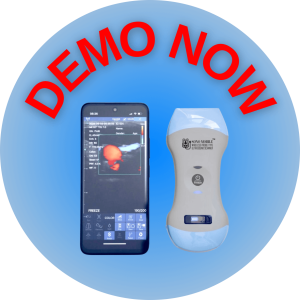Mobile ultrasound technology is increasingly beneficial in primary care settings due to its portability, real-time imaging capabilities, and versatility. Here are several ways it can enhance primary care:
- Rapid Diagnosis: Mobile ultrasound allows primary care providers to quickly diagnose a variety of conditions, such as gallstones, kidney stones, and abdominal aortic aneurysms, without the need for referral to a specialist or a hospital.
- Point-of-Care Decision Making: It facilitates immediate clinical decision-making by providing real-time images at the point of care. This can lead to faster treatment initiation and improved patient outcomes.
- Cardiac Assessments: Primary care physicians can use mobile ultrasound to perform basic cardiac assessments, such as evaluating left ventricular function, detecting pericardial effusion, and assessing for heart failure.
- Musculoskeletal Examinations: Mobile ultrasound is useful for evaluating musculoskeletal issues like tendonitis, joint effusions, and soft tissue It can guide joint injections and aspirations, improving accuracy and patient comfort.
- Obstetric and Gynecological Care: In obstetrics, mobile ultrasound can be used for early pregnancy confirmation, monitoring fetal development, and assessing conditions such as ectopic pregnancies. It also helps in gynecological evaluations of ovarian cysts or uterine abnormalities.
- Vascular Assessments: It helps in the assessment of vascular conditions, including deep vein thrombosis (DVT) and peripheral artery disease (PAD), allowing for timely intervention.
- Guidance for Procedures: Mobile ultrasound provides guidance for various in-office procedures, such as abscess drainage, biopsies, and central line placements, increasing the safety and accuracy of these interventions.
- Lung and Thoracic Evaluation: It aids in the evaluation of lung and pleural conditions, such as pneumonia, pleural effusion, and pneumothorax, which can be particularly valuable in emergency situations.
- Pediatric Care: Mobile ultrasound can be used in pediatric patients for non-invasive, radiation-free assessments of conditions such as pyloric stenosis, intussusception, and congenital hip dysplasia.
- Patient Education and Engagement: The visual nature of ultrasound allows providers to show patients real-time images of their condition, enhancing understanding, trust, and engagement in their care plan.
Overall, mobile ultrasound in primary care improves diagnostic capabilities, enhances procedural safety, and increases patient satisfaction through more immediate and comprehensive care.



